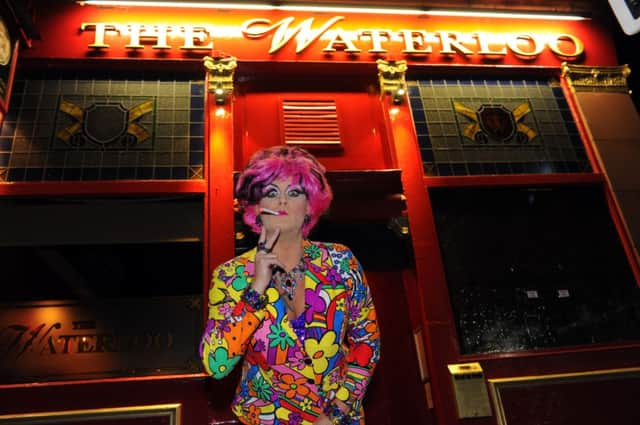Book review: Daunderlust, by Peter Ross


DAUNDERLUST: DISPATCHES FROM UNREPORTED SCOTLAND
PETER ROSS
Sandstone, £8.99
They’ll want to know, too, how it was that, back in the days of newspapers, there was a job like the one he had on Scotland on Sunday. “You mean,” one can imagine them asking, “they actually paid you money to do this?” And the wizened Ross will tell them that yes, that’s what he had to do back then – travel the length and breadth of the country, finding the kind of people who never normally made the headlines but whose lives, when examined, turned out to be even more fascinating than those who did. And writing about them.
So: Barlinnie one week, the Royal Caledonian Ball in London the next. The Duke of Buccleuch’s Hunt in Selkirkshire in November, digging peat on Lewis in June. And throughout the year, searching out the eccentric, the individualistic, the dafter and the darker side of Scotland, taking down the words of “drag queens and drug addicts, sheep farmers and street preachers, monks, drunks and dudes smoking skunk”.
Advertisement
Hide AdThis kind of journalism is rare enough at the best of times, and these are far from the best of times. Instead, we are in danger of forgetting about the kind of people Ross writes about – long-distance lorry drivers, greyhound betting kings, Up Helly Aa costumiers, Perthshire strawberry-gatherers, fairground folk in Fife. These days we are supposed to be more interested in celebrity. Yet whereas no-one I know has ever met even one Kardashian, most of us have probably unknowingly shared a bus or a train with some of the people featured here.
Ross’s journalism is big-hearted but not big-headed. To all extents and purposes, this is an ego-free fly-on-the-wall affair, all but devoid of the first person singular. Even when, shadowing a team of paramedics, he finds himself right at the centre of the picture – standing next to a corpse in a pub or watching as a man has a heart attack – you’d hardly know it from his writing. Rightly, the focus remains where it should be, on the paramedics and how they deal with the situation. And on the patient, who recovers, rips off his oxygen mask and – this being Glasgow – deadpans: “There goes my Saturday shift” to his ashen-faced wife.
Ross’s kindness to his subjects means that his features about the marginalised don’t have the depth of, say, Diane Arbus’s portraits, which invariably revealed something of the damage of her subjects’ lives – but long-form journalism seldom gets that deep, so it’s hardly a serious criticism. And his multi-voiced features – as most of these are – have a compensating width. One about the Waterloo, Glasgow’s oldest gay pub, for example, doesn’t just get down all the physical details (prime spot is the end of the bar next to the toilets; worst one, called “Compost Corner”, is for the elderly hopefuls at the other end), but describes its more outrageously colourful regulars too. And as Ross also has a good sense of social history, the piece also gives a brief glimpse of the repressed past, mentioning the occasional dances at the Langside and Woodside Halls in the 1970s, where “kissing and bodily contact were forbidden, a rule enforced by elderly commissionaires in green uniforms”.
Inevitably, one misses the photographs (usually by Robert Perry) that accompanied Ross’s magazine articles – especially in one of the stand-out pieces, in which, almost 50 years on, Ross traced three of the people – boys then, almost pensioners now – in Oscar Marzaroli’s photo “The Castlemilk Lads”. But the best pieces still read well, and have a range beyond anything in current Scottish journalism, from a piece about accompanying extreme cleaners into a flat where someone has died and where the sink is mysteriously full of blood (“the stink clogs and clots at the back of the throat”) to a lovely piece about Arthur’s Seat from dawn to dusk on a hot day, when it became “the perfect expression of that rare phenomenon – Scottish happiness”.
That piece ends the book, but I was with him from its very first sentence: “There are more things in Irvine and Perth than are dreamt of in our philosophy”. Damn right there are.